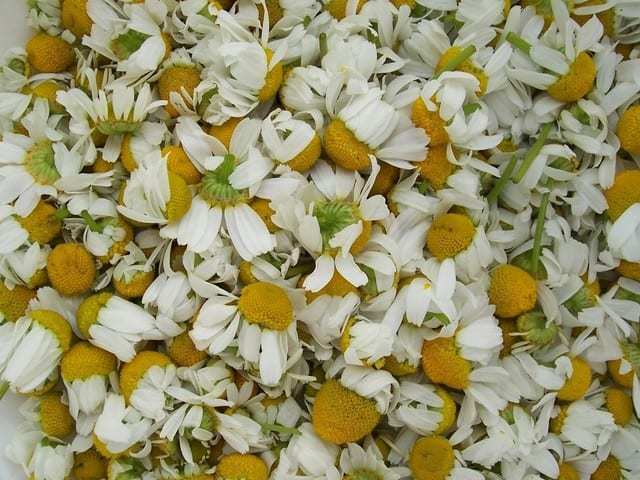We all love a bit of sunshine so we’ve decided to continue the theme with a closer look at the sweetly fragranced, sunny-centred herbal doyenne, Chamomile.
Chamomile is the common name for the family of daisy-like plants called Asteraceae. The name Chamomile is derived from French, Greek and Latin and is roughly translated to mean “earth apple on the ground”, likely due to its subtle yet distinctive apple aroma. There are a number of different species of Chamomile and not all are used for the same purposes, however Roman Chamomile and German Chamomile are the most prevalent and widely used species within Europe.
According to hieroglyphic records as far back as 2000BC, the Ancient Egyptians widely used Chamomile in cosmetics and for its healing properties and so revered the plant they dedicated it to their gods. The Greeks used it regularly to treat fever and female disorders. It has been used since at least the first century AD to treat digestive disorders and was recognised in the ancient Anglo-Saxon manuscript the “Lacnunga” as one of the “Nine Sacred Herbs”. Chamomile was also used in the Middle Ages as one of the aromatic stewing herbs and more recently in the nineteenth century it was widely reputed by gardeners to ensure healthy, nourished gardens due to its healing effect on other sick plants.
Today Chamomile preparations are used to treat a range of ailments from hay fever, inflammation, muscle spasm, menstrual disorders and insomnia to treating wounds, ulcers, gastrointestinal disorders and haemorrhoids. Chamomile comprises a number of powerful chemical compounds that in laboratory studies have had positive effects on skin, breast, ovarian and prostate cancer, are anti-inflammatory and the potential for blood-thinning effects.
Chamomile is prepared in a variety of forms. It is widely produced as a tea using dried chamomile flowers and well known as a digestive aid, particularly for the treatment of nausea and heartburn. It is regularly added to skin care products as an emollient and for its anti-inflammatory properties. Chamomile can also be blended with other essential oils such as lavender and rose for aromatherapy purposes.
While Chamomile is widely regarded as safe for use and gentle enough even for children, pregnant and breastfeeding women are advised to avoid using Chamomile, as are people who are allergic to ragweed.
Want to give Chamomile a go?
Bee Loved’s gentle Hand Cream uses the healing power of Chamomile to soothe dry, rough and itchy hands, tired from work and play. Leaving a protective layer of beeswax as a barrier for sensitive skin, our Hand Cream is a favourite among our customers.
This blog post appeared first on the Bee Loved Skincare blog.




